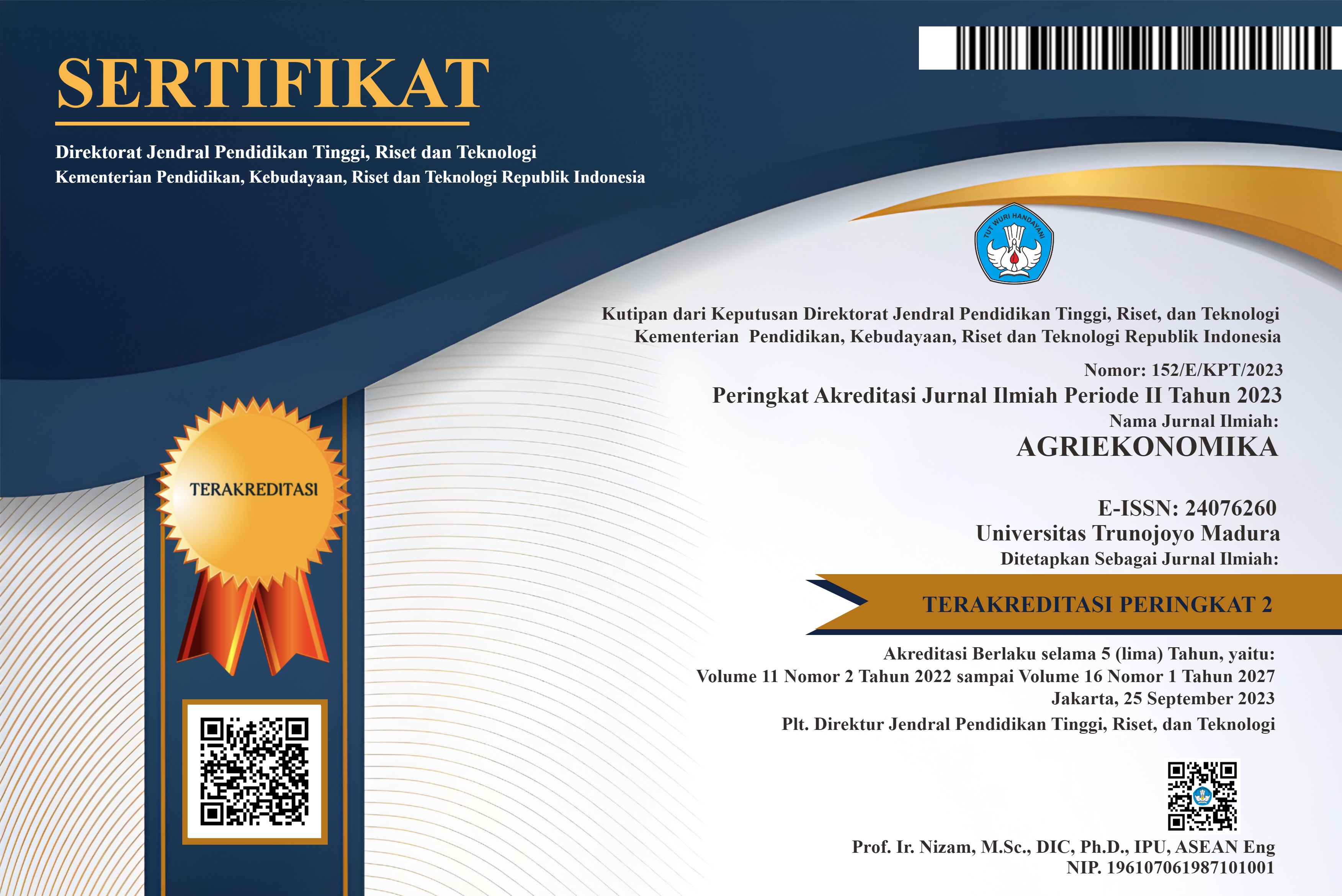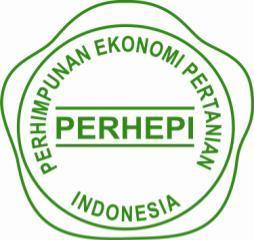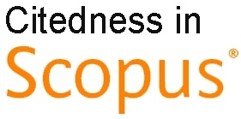TARIF BEA MASUK OPTIMAL BAGI PRODUK PERTANIAN INDONESIA
Abstract
Setiap negara berhak menentukan besaran Tarif Bea Masuk (TBM) yang dikehendaki terhadap suatu produk atau komoditi. Kebijakan tarif bea masuk untuk produk pertanian adalah menerapkan nilai serendah mungkin apabila produk/komoditi yang bersangkutan tidak dapat diproduksi secara optimal di dalam negeri. Studi ini dilakukan untuk melihat pengaruh tarif bea masuk produk impor pertanian terhadap produksi atau penjualan dari produk pertanian di Indonesia serta menghitung besarnya tarif optimal untuk produk-produk pertanian Indonesian dengan menggunakan panel data OLS. Hasil estimasi memperlihatkan, jika pemerintah menaikkan tarif sebesar 1 persen, maka secara langsung petani akan menikmati peningkatan pendapatan sebesar Rp. 1,62 juta /hektar. Tarif juga memiliki pengaruh signifikan terhadap fluktuasi penjualan produk-produk pertanian sebesar 54.73 persen. Buah-buahan merupakan komoditas yang paling rentan terpengaruh oleh tarif, posisi kedua yaitu produk padi dan palawija serta posisi ketiga yaitu sayuran.
ABSTRACT
Every country or economy has a right to determine their tariff rate for each product or commodity. Tariff policy for agricultural product was aimed to establish at the lowest level possible only if the product could not be optimally produced domestically. This study was conducted to see the influence of import tariff rate for agricultural product, to the production or selling prosess of agricultural product in Indonesia, while also counting the optimum tariff rate for Indonesia’s agricultural product through Ordinary Least Square Data Panel. The resulth show that, if Government was increasing the tariff by 1 percent, then farmers would directly benefited an increasing sales as Rp. 1,62 Million/ hectare. Tariff rate also has significant impact to the fluctuation of sales of agricultural product by 54,73%. Fruits is the most vulnerable commodity that will be influenced by tariff rate changes, followed by rice, and vegetables in the last.
Keywords
Full Text:
PDFReferences
Badan Pusat Statistik. 2015. Distribusi Persentase Produk Domestik Bruto Triwulanan Atas Dasar Harga Berlaku Menurut Lapangan Usaha, 2000-2014 (Persen). Badan Pusat Statistik. Jakarta.
Baggs, J., and Brander, J. A. (2006). Trade Liberalization, Profitability, and Fianncial Leverage. Journal of International Business Studies. 37(2):, 196-211.
Direktorat Jendral Pengolahan dan Pemasaran Hasil Pertanian, Kementerian Pertanian. 2014. Statistik Ekspor Impor Komoditas Pertanian 2001-2013. Jurnal Statistik Ekspor Impor Komoditas Pertanian. 1-39.
Gujarati, D. N. 1995. Basic Econometrics. McGraw-Hill. New York
Harrison, Ann / Hanson, Gordon (1999): Who gains from trade reform? Some remaining puzzles,in: Journal of Development Economics, Volume 59, pp. 125-154.
Izadmehr, et.al. 2014. Research on The Effects of WTO Accession on Profitability of Selected Industries in Tehran’s Stock Exchange. Indian Journal of Fundamental and Applied Life Science ISSN: 2231-6345.
Laporan Tahunan Bank Indonesia. 2015. Departemen Komunikasi. Diambil dari www.bi.go.id.
Pudjiastuti, Agnes Quartina. 2014. Perubahan Neraca Perdagangan Indonesia Sebagai Akibat Penghapusan Tarif Impor Gula. Agriekonomika 3(2): 110-120.
Reinars, S., & Sulaiman. 2015, April 30. Ekonomi/MAkro. http://bisniskeuangan.kompas.com/read/2015/03/26/113007926/Tingkat.Kesejahteraan.Petani.Makin.Menurun.Sejak.2012.
DOI: https://doi.org/10.21107/agriekonomika.v4i2.977
Refbacks
- There are currently no refbacks.







